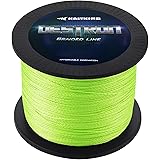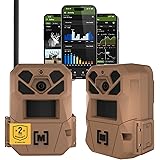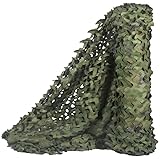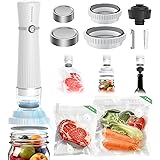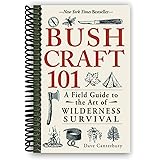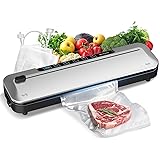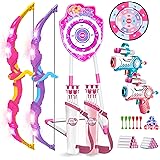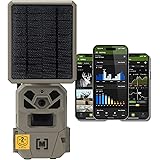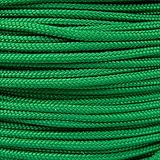Unveiling the Essential Guide: A Deep Dive into The Survival Medicine Handbook
When disaster strikes, knowledge becomes your most powerful tool. The original edition of The Doom and Bloom Survival Medicine Handbook spanned 411 pages. Its revised and expanded second edition now boasts a comprehensive 539 pages. This significant growth highlights the critical need for detailed, accessible medical information. This guide complements the video review above, offering a closer look. It unpacks the expanded content of this vital resource. Understanding survival medicine is paramount for any prepper.
Why a Physical Survival Medicine Handbook Matters
Many preppers understand the value of printed resources. Digital files are convenient until power fails. An EMP or grid-down scenario renders electronic devices useless. A physical book, however, remains accessible. It serves as an invaluable reference when technology is unavailable. You can store it in a bug-out bag. It holds its weight in gold during a crisis.
The updated handbook offers many improvements. It includes more historical context. Readers find new remedies and treatments. The authors also corrected earlier information. These updates align better with established preparedness norms. This makes the second edition even more reliable. It truly enhances your survival medicine knowledge.
Most of us are not medical professionals. We may, however, become the designated medic. Our family or group may depend on our skills. This book fills that critical knowledge gap. It empowers ordinary individuals. We can then provide essential medical care. The handbook becomes our personal medical college.
Unpacking Key Sections of Your Survival Medicine Guide
The table of contents maintains a similar structure. Core sections like hygiene and sanitation are present. Injuries and chronic medical problems are well-covered. Environmental factors and medications also feature prominently. Yet, the second edition offers much more depth. Each section contains significantly expanded information. This provides readers with greater detail.
Older medical books assume hospital access. They focus on initial care until professional help arrives. This survival medicine handbook takes a different approach. It prepares you for scenarios where help is far away. You must perform everything yourself. This means tackling complex medical situations. The book equips you for true self-sufficiency. Pairing it with a PDR (Physicians’ Desk Reference) offers extensive resources.
Mastering Essential Survival Medical Skills
The book significantly expands on practical skills. Patient Transport is one excellent example. The original edition showed simple illustrations. The new version features detailed sketches. These include back carries and blanket pulls. It teaches proper lifting techniques. This visual guidance is incredibly helpful. These are crucial skills for any medic.
Principles of Medical Preparedness are also emphasized. The book teaches when to suture a wound. It also explains when not to close a wound. Knowing this distinction is vital for preventing complications. During a 2010 preparedness show, hands-on suturing practice was offered. This type of practical experience is reflected in the book’s advice. Proper wound management is essential survival medicine.
Wound drains are another practical skill covered. The book clearly shows how to insert them. This prevents infection and promotes healing. It addresses allergic reactions like anaphylaxis. It stresses the importance of an EpiPen. Having one in your kit is crucial. Learning these skills prepares you for emergencies.
Integrating Natural Remedies in Survival Medical Kits
One unique aspect is its embrace of alternatives. The book integrates conventional and unconventional treatments. It discusses essential oils and medicinal herbs. This provides options when standard supplies are scarce. For instance, natural pain relievers are covered. Recipes for poultices are also included. These can be made from common ingredients.
Stephanie Erickson, a dōTERRA representative, offers expertise. Her essential oil videos align with this book’s philosophy. dōTERRA even offers a prepper kit. This kit can help with water purification. It provides other useful applications. Exploring natural paths expands your options. This flexibility is key to survival medicine.
The book details how to stop minor bleeding. It explains cleaning wounds with herbal antiseptics. Activated charcoal can aid wound healing. You can create a poultice from it. This offers effective natural remedies. These alternatives are invaluable in a crisis. They provide hope when traditional methods fail.
Preparing for Complex Medical Challenges
The handbook covers many advanced medical problems. It addresses chronic conditions like diabetes and thyroid issues. Fracture management is extensively detailed. Techniques like traction are explained step-by-step. These topics are often overlooked in basic guides. This book offers comprehensive insights. It prepares you for severe injuries.
It delves into extreme threats as well. Biological warfare and radiation sickness are discussed. This prepares readers for catastrophic events. Topics like earthquake preparedness are included. Heat-related injuries and smoke inhalation are covered. You also learn about mosquito-borne illnesses and tetanus. Food poisoning and dental issues receive attention. The scope is incredibly broad.
Recognizing the signs of allergic reactions is critical. Anaphylaxis requires immediate intervention. The book stresses carrying an EpiPen. Obtaining a prescription for your medical kit is advised. This ensures you are ready for sudden, life-threatening events. This depth of coverage makes the survival medicine handbook essential.
Strategic Medical Supply Lists for Every Scenario
The book provides comprehensive supply lists. These range from personal IFAK (Individual First Aid Kit) items. They scale up to nuclear family kits. Larger group kits and expedition supplies are detailed. Finally, it outlines items for a community clinic. Each list increases in size and complexity. This helps you build appropriate medical provisions.
It distinguishes between sterile and clean supplies. Understanding this difference is crucial. Autoclave methods are discussed for sterilization. The book also suggests additional prescription medicines. These might be useful for your kit. These detailed lists remove guesswork. They ensure you are adequately stocked.
Learning medical skills is paramount. The book outlines essential knowledge. This includes taking vital signs. Pulse, respiration, and blood pressure are covered. It explains palpation for vital signs. This is useful without a sphygmomanometer. These practical tips are invaluable for survival medicine.
Developing Your Medical Preparedness Knowledge Base
The handbook serves as a foundational resource. It encourages continuous learning. The author’s personal experience with a splinter highlighted this. He discovered the utility of disposable scalpels. This realization came directly from consulting the book. Small tools can make a huge difference. They minimize pain during treatment.
Dr. Bones and Nurse Amy are highly respected. Their expertise shines through every page. Their dedication makes this book exceptional. It is truly an outstanding resource. This comprehensive survival medicine guide empowers you. It provides critical knowledge for uncertain times.


